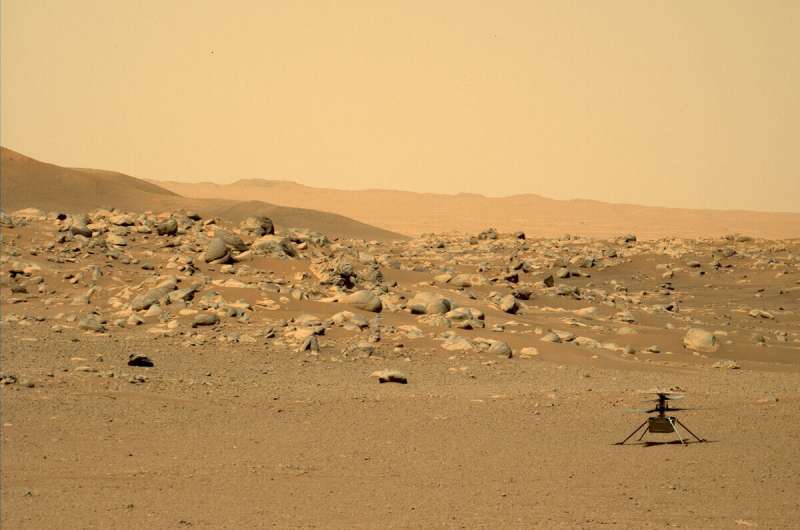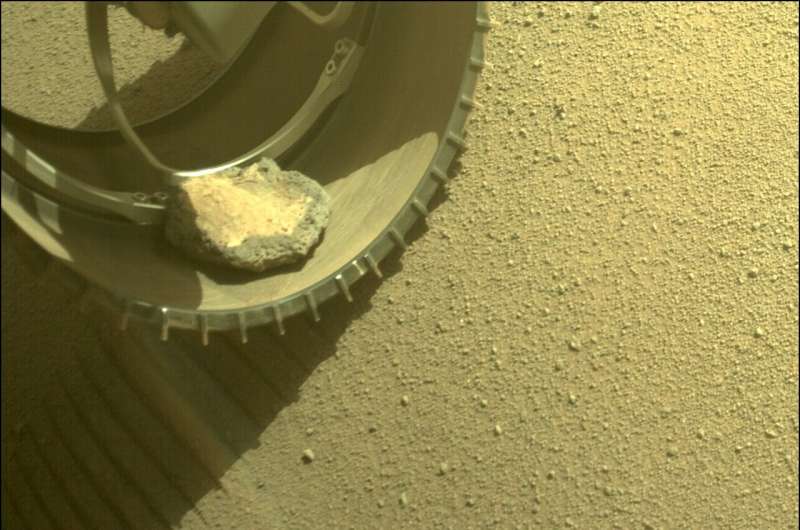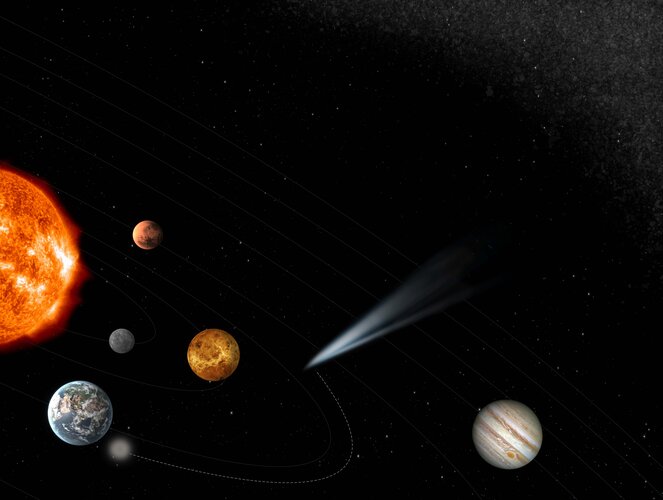
Copernical Team
UK and US to launch Joint Mission Aboard UK's first Virgin Orbit orbital flight
 Satellite launch company Virgin Orbit (Nasdaq: VORB) announces today that a joint mission between the United Kingdom's Defense Science and Technology Laboratory and the United States Naval Research Laboratory (NRL) is expected to be lofted on the first space launch out of Spaceport Cornwall later this year.
The government agencies' joint Coordinated Ionospheric Reconstruction CubeSat Exper
Satellite launch company Virgin Orbit (Nasdaq: VORB) announces today that a joint mission between the United Kingdom's Defense Science and Technology Laboratory and the United States Naval Research Laboratory (NRL) is expected to be lofted on the first space launch out of Spaceport Cornwall later this year.
The government agencies' joint Coordinated Ionospheric Reconstruction CubeSat Exper Keeping Our Sense of Direction: Dealing With a Dead Sensor
 As the season has turned to winter in Jezero Crater, conditions have become increasingly challenging for Ingenuity, which was designed for a short flight-test campaign during the much warmer Martian spring. Increased amounts of dust in the atmosphere, combined with lower daytime temperatures and shorter days, have impacted Ingenuity's energy budget to the point where it is unable to keep itself
As the season has turned to winter in Jezero Crater, conditions have become increasingly challenging for Ingenuity, which was designed for a short flight-test campaign during the much warmer Martian spring. Increased amounts of dust in the atmosphere, combined with lower daytime temperatures and shorter days, have impacted Ingenuity's energy budget to the point where it is unable to keep itself NASA's Mars helicopter Ingenuity needs a patch to keep flying after sensor failure

NASA's Mars helicopter Ingenuity has suffered a sensor failure, according to Håvard Grip, the chief helicopter pilot on the project. In a recent blog post on the NASA Science page, he described some of the challenges the tiny robot is experiencing in the harsh environment and also noted that a sensor failure is going to require a computer patch.
Perseverance has a pet rock

How do you choose a rock on Mars? Sometimes you don't—it chooses you.
For the past four months, Perseverance has had an unexpected traveling companion. Back on sol 341—that's over 100 sols ago, in early February—a rock found its way into the rover's front left wheel, and since hitching a ride, it's been transported more than 5.3 miles (8.5 km). This rock isn't doing any damage to the wheel, but throughout its (no doubt bumpy!) journey, it has clung on and made periodic appearances in our left Hazcam images.
This is not the first time a rock has hitched a ride on a Mars rover mission.
Comet Interceptor approved for construction

ESA’s Comet Interceptor mission to visit a pristine comet or other interstellar object just starting its journey into the inner Solar System has been ‘adopted’ this week; the study phase is complete and, following selection of the spacecraft prime contractor, work will soon begin to build the mission.
Charting sea level from space
 Video:
00:12:21
Video:
00:12:21
Satellite images of our planet have become essential to our survival, offering a new outlook of our world. With rising seas being one of the biggest threats to society, satellite altimeter missions such as Copernicus Sentinel-6 are essential in monitoring global and regional changes in sea level.
Unbeknown to many, the island of Crete, Greece, plays an important role in the Copernicus satellite altimetry constellation and on an international stage. Satellite altimetry data have to be continuously monitored at the ESA’s Permanent Facility for Altimetry Calibration where different techniques have pioneered the use of transponders to provide the
Hubble captures largest near-infrared image to find universe's rarest galaxies
 An international team of scientists has released the largest near-infrared image ever taken by NASA's Hubble Space Telescope, enabling astronomers to map the star-forming regions of the universe and learn how the earliest, most distant galaxies originated. Named 3D-DASH, this high-resolution survey will allow researchers to find rare objects and targets for follow-up observations with the recent
An international team of scientists has released the largest near-infrared image ever taken by NASA's Hubble Space Telescope, enabling astronomers to map the star-forming regions of the universe and learn how the earliest, most distant galaxies originated. Named 3D-DASH, this high-resolution survey will allow researchers to find rare objects and targets for follow-up observations with the recent Researchers create simulations studying the lifecycle of ancestor galaxy cities
 For the first time, researchers have created simulations that directly recreate the full life cycle of some of the largest collections of galaxies observed in the distant universe 11 billion years ago, reports a new study in Nature Astronomy.
Cosmological simulations are crucial to studying how the universe became the shape it is today, but many do not typically match what astronomers obse
For the first time, researchers have created simulations that directly recreate the full life cycle of some of the largest collections of galaxies observed in the distant universe 11 billion years ago, reports a new study in Nature Astronomy.
Cosmological simulations are crucial to studying how the universe became the shape it is today, but many do not typically match what astronomers obse Cosmological gravitational waves: A new approach to reach back to the Big Bang
 Operating observatories around the globe target sky regions characterized by low contamination from Galactic radiation looking for the imprint of Cosmological Gravitational Waves (CGWs) produced during Inflation, the mysterious phase of quasi-exponential expansion of space, in the very early Universe.
A new study by the POLARBEAR collaboration, led by SISSA for the part concerning the inte
Operating observatories around the globe target sky regions characterized by low contamination from Galactic radiation looking for the imprint of Cosmological Gravitational Waves (CGWs) produced during Inflation, the mysterious phase of quasi-exponential expansion of space, in the very early Universe.
A new study by the POLARBEAR collaboration, led by SISSA for the part concerning the inte Balmy Days on Mars - Sol 3496
 Our drive was successful, and we ended with some lovely flat bedrock with some gorgeous veining running through it. As APXS payload uplink lead today, I saw several targets that the APXS team would have loved to analyze.
Sadly, the timing didn't work in our favour today. APXS prefers temperatures below -20 C - the colder it is, the better the data quality is. But daytime temperatures in Ga
Our drive was successful, and we ended with some lovely flat bedrock with some gorgeous veining running through it. As APXS payload uplink lead today, I saw several targets that the APXS team would have loved to analyze.
Sadly, the timing didn't work in our favour today. APXS prefers temperatures below -20 C - the colder it is, the better the data quality is. But daytime temperatures in Ga 